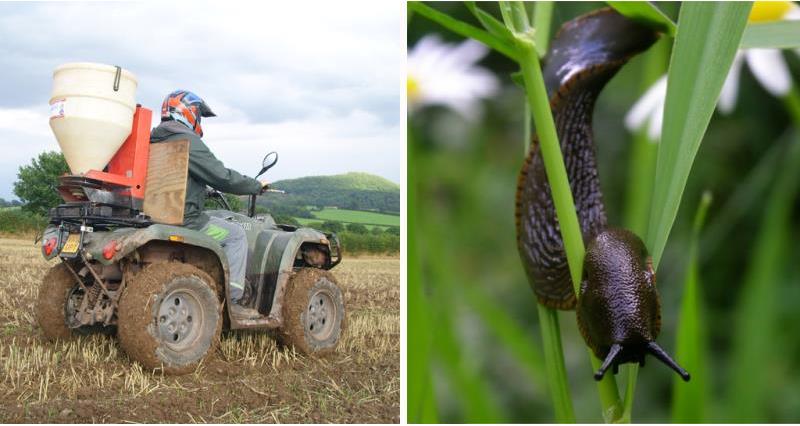She writes:
We usually get a good drop of rainfall during October, so we could have perfect conditions for slug survival. That makes it hugely important that growers adhere to current guidelines on metaldehyde, to avoid contaminating watercourses and to protect drinking water supplies.
The current chemical slug control options comprise metaldehyde and ferric phosphate, after methiocarb was banned in 2014. Metaldehyde is still available but at risk due to possible restriction by the EU if limits in drinking water are exceeded.
This means care should be taken to avoid situations where it is more likely to enter drinking water. The advice says use lower doses, don't apply when heavy rain is forecast and keep it away from watercourses. Full guidelines on best practice are available at www.getpelletwise.com.
Don’t forget that ferric phosphate can be used as an alternative to metaldehyde – and remember that integrated slug control can be explored before chemical control is considered.
That means:
- Producing a fine, consolidated seedbed through actions of rolling to assist in providing a fine tilth, free of clods that attract slugs.
- Shallow cultivation to incorporate crop residues reduces numbers.
- Ploughing, which considerably reduces slug populations and risk of damage.
- Trapping to assess slug threshold levels and demonstrate that the use of metaldehyde is justified. If bait thresholds indicate a risk, apply pellets just after drilling or rolling if it is to be carried out.
- Soil management practices to reduce the risk of run off. These include establishing the crop and tramlines across the slope, parallel to watercourses to minimise surface water travelling directly into the watercourse.
Using metaldehyde?
Remember: Responsible use of pesticides protects the environment and the supply of clean water. It will also maintain the availability of products like slug pellets. Good practice from farmers is required.
Here’s what needs to be taken into consideration:
- Is your land a high risk area for metaldehyde? Find out at www.wiyby.co.uk
- The slope of the field - steeper fields are a higher risk
- The drainage status of the field - heavy soils and under-draining are a high risk
- The proximity of watercourses or ditches - fields adjacent to these are high risk
- Current and predicted weather - saturated soils and heavy rain can cause runoff
- The filling and wash down area of the pellet applicator - areas which run off to drains or watercourses will have a high risk of pollution
- Calibrate your applicator before use and according to product and rate to be applied
- Do not apply slug pellets when soils are at full water holding capacity or if heavy rain is imminent
- Use the minimum amount of active per hectare
- If drains are flowing do not apply metaldehyde based slug pellets
- Clear up spills immediately no matter how small
- Know your spreader width and switch off on headlands. Do not apply within six metres of a watercourse
- When cleaning the applicator, do not contaminate drains or watercourses
- Do not leave packaged product in field unattended
- Only apply pellets in favourable conditions – i.e. conditions that you would spray in.
The maximum application rate of 700g/ha/calendar year is now a statutory legal requirement, along with a six-metre no-spread zone adjacent to watercourses, and all professional users must be trained and hold a certificate of competence (PA4).
The Sustainable Use Directive says all applicators must be tested by an NSTS assessor by their fifth year of application and every sixth year thereafter. Many assurance schemes and supermarket protocols require more frequent testing.
